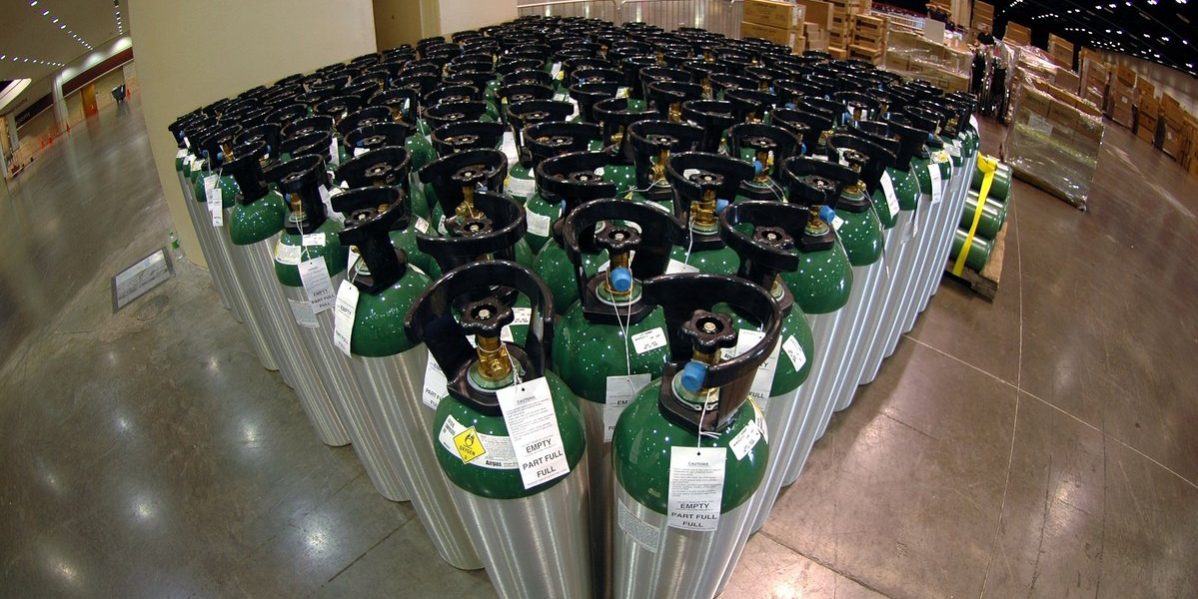Oxygen is prescribed for a variety of illnesses, but most commonly we see it prescribed for Chronic Obstructive Pulmonary Disease (COPD) and hypoxia, which means low oxygen levels. Oxygen is only to be used when prescribed by a qualified physician, and should only be used as prescribed. Your physician will determine when you should be using the oxygen and how much. Oxygen is delivered by liter flow and the settings are usually referred to as liters per minute (LPM). Oxygen use over 4 LPM is not as commonly needed, with the exception of patients suffering from pulmonary fibrosis or interstitial lung disease.
The two types of oxygen flow prescribed are continuous and pulse dose flow. Continuous use allows a steady and continuous liter flow of oxygen, whereas pulse dose delivers a pulse of oxygen when triggered by a breath from the nose. Pulse dose is usually only used as a conserving measure when using portable oxygen, to help the oxygen and battery life (if using a battery powered portable oxygen conserving device) last longer.
There is a wide variety of equipment that can be used to provide oxygen. Most people are familiar with oxygen tanks, because that is usually what we see used in hospitals and doctor’s offices. Oxygen tanks are very versatile and can be used when out and about. There are no moving parts, no batteries to recharge, and they are easy to use. They also come in many different sizes. Please see the image below that shows what they look like and the variety of sizes of available (with a standard paper towel roll for comparison). The smaller ones are considered portable tanks and can be used when traveling to and from doctor’s appointments, going for walks, visiting friends and family, or so on.

B-Tank D-Tank E-Tank M60
_____________________________________________________________________________________
When oxygen is required at home, a stationary concentrator can provide a constant source of oxygen. This equipment creates a flow of air with a high oxygen percentage, and it does not need to be recharged or refilled, since it is plugged into a wall outlet for power.
If oxygen is used often and the individual has a frequent need to use portable oxygen, then a system to fill oxygen cylinders can be provided. This allows individuals to re-fill their own tanks at home. This option works great for patients who require continuous flow oxygen or need higher liter flows than portable oxygen concentrators can provide. We provide two refillable tanks sized based on the patient’s need and portability levels to ensure the best outcome.
Another option for patients on the go is a portable oxygen concentrator (POC). POCs are small units that make their own concentrated oxygen using the air around them. The oxygen is delivered via pulse dose, meaning it is not a continuous flow of oxygen, rather it is triggered by your breaths to release a pulse of oxygen. These devices are not designed to replace home oxygen concentrators, as they’re strictly for portability. With a POC, it’s important to understand that you need to breathe in from your nose in order to ensure that the oxygen will be delivered to you!
To acquire a pulse dose portable oxygen concentrator, a pulse dose evaluation is required to ensure it can provide the appropriate treatment for you. These devices are battery powered and can be easily carried given their light weight. However, it is important to note that the batteries only last a couple to several hours, depending on the pulse flow setting and amount of usage. It is important to plan use appropriately and bring a charger or a back-up oxygen source just in case. External batteries are also available for some concentrators, and are another option that can increase your usage time.
When in the home, it is typically recommended to use a stationary concentrator because it does not need to be recharged or refilled.
Patients that use a CPAP/BiPAP at night will sometimes combine it with oxygen therapy per their doctor’s request. In these cases, oxygen would be bled into CPAP/BiPAP using an adapter, allowing the oxygen to flow through the CPAP tubing. Only home concentrators can be used for “bleed in” purposes, as the POC’s cannot function that way. The standard and most common delivery method for all oxygen systems are Nasal Cannulas.
For a more comfortable experience, humidification can be used with oxygen therapy, usually via a humidifier cup. This is not usually needed, but can be used as a personal preference. We generally recommend a water based lubricant or saline to help assist with any dryness as a result of the oxygen.
_____________________________________________________________________________________
How Often to Change O2 Supplies:
Nasal cannulas should be changed twice monthly, depending on usage (24/7 vs “as needed”). O2 supply tubing (the longer tubing) should be changed on a monthly basis. The outer filter should be removed, washed/cleaned, and replaced as needed.
_____________________________________________________________________________________
– Page Maryyanek
*This content is not intended to be a substitute for professional medical advice, diagnosis, or treatment. Always seek the advice of your physician or other qualified health provider with any questions you may have regarding a medical condition.

